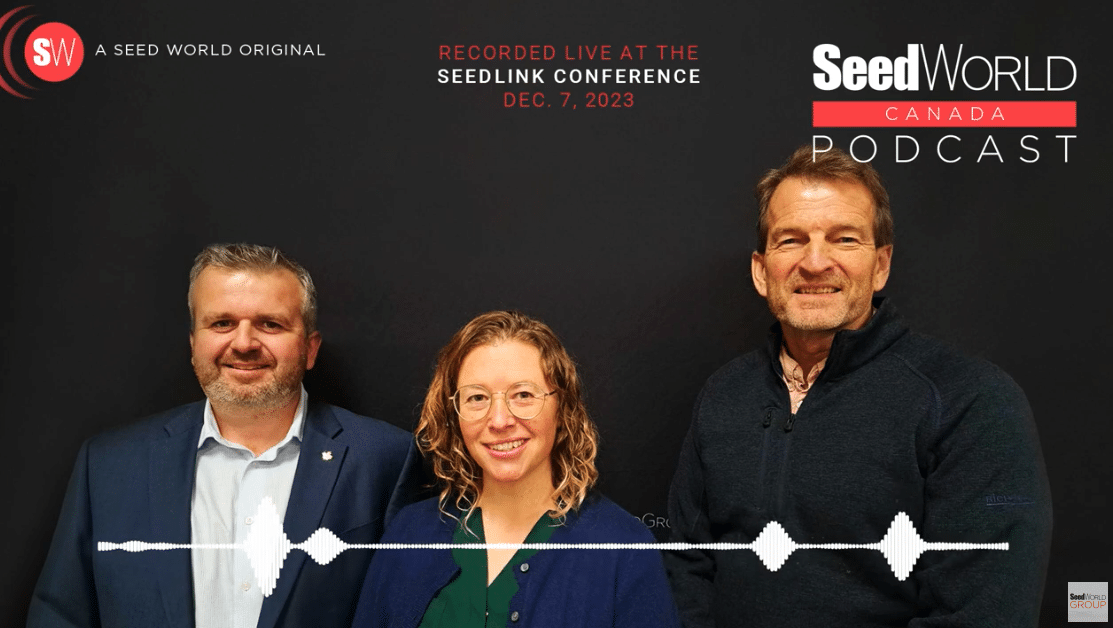Drill Box Survey shows Value of Certified seed
_x000D_
The Canadian Seed Growers’ Association is a member of the Association of Official Seed Certifying Agencies (AOSCA) and sits on both its board of directors and its Certification Requirements & Standards Council.
_x000D_
The value of that participation for CSGA and Canadian seed growers has been outlined in previous issues of CSGA’s magazine, Seed to Succeed. However, testimonials, such as the following adapted from the Utah Crop Improvement Association — Utah’s seed certification agency — Feb. 15, 2015, newsletter, could showcase added value.
_x000D_
_x000D_
Value in Certified Seed
_x000D_
(Reprinted with permission of the Utah Crop Improvement Association) It appears we’ll be in the fields planting crops earlier than normal this year. It’s not too early for growers to select and purchase seed for all crops that will be planted. Genetically pure certified seed of known identity and superior quality is the preferred source. Sometimes, however, growers are tempted to use seed from their own bins or from a neighbour. The thinking is they can save a few dollars on seed costs and still get a good crop. Results from the most recent Drill Box Survey should convince everyone that certified seed is a great bargain, even if it does cost more per bag at planting time.
_x000D_
Once each decade, since 1958, Utah State University Extension, Utah Crop Improvement Association, Utah Agricultural Experiment Station and the Utah Department of Agriculture and Food (UDAF) have conducted drill box surveys. The purpose is to document the kind and quality of seed that is actually being planted in Utah fields. The most recent survey for small grains included 42 spring samples and 46 fall planted samples.
_x000D_
In most cases the samples were taken from the box of a grain drill actually planting in the field. In some cases they collected samples from bags in pickups or truck boxes that were parked in the field waiting to be dumped into the drill boxes. In all cases they actually visited the farm and in some cases collected more than one sample from a given farm if they were planting multiple acres from different seed lots in different fields. The protocol was to include grain from the top, middle and bottom portions of each drill box. Otherwise, small weed seeds would likely settle to the bottom, or large seeds would float to the top. Without proper sampling protocol a valid purity analysis could not be assessed. All samples were methodically assessed at the UDAF Seed Laboratory.
_x000D_
For each sample collected, they conducted a germination test, assessed seed purity, identified per cent and identity of weed seeds, inert matter and other crop seeds (such as wheat seeds mixed with barley seed). The typical analysis on certified seed was 99.09 per cent purity, 98 per cent germination, zero per cent weeds, zero per cent other crops and 0.01 per cent inert matter. By comparison, farmer saved seed was 98.34 per cent pure but only an average of 87 per cent of the seed germinated.
_x000D_
A germination test 12 per cent lower than certified seed is reason enough to only plant certified. Even more alarming was the fact that germination from some of the farmer saved seed was as low as 48 per cent. Another real concern from non-certified seed came from the detection of 0.32 per cent weeds, 0.26 per cent other crop seed and 1.13 per cent inert matter. Much of the weed seed was barnyard grass, green foxtail, goosefoot, wild mustard, pigweed, witchgrass, wild buckwheat, quack grass, lamb’s-quarters and field bindweed. Most of these seeds are tiny, so on a per cent basis, a multitude of weeds were being planted for each cultivated crop, such as wheat or barley. Anything saved on the initial cost of the seed was soon lost to reduced yield or additional herbicide costs from attempting to control weeds that the grower actually planted. A purity of about 98 per cent doesn’t look like a bad number, but when you look at what makes up the remaining two per cent it is amazing that someone would consider planting such seed.
_x000D_
I will confess that over the years I’ve planted seed on our farm that came from our own bin or was purchased from trusted neighbours. At the time we thought it was a great bargain because it cost less than certified seed. In most cases, we took it to a seed conditioning mill and had it cleaned before planting, but not all growers do that. Years of data from their regular Drill Box Survey demonstrate that certified seed is actually a savings instead of an expense. We heartily encourage all growers to purchase proven seed of known purity and verified germination. Any perceived savings on the front end of a crop is soon lost on the back end with increased weed pressure, lower yields, and reduced quality.













